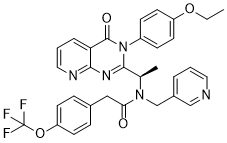The phosphotome is classified into classical AbMole LOUREIRIN-B groups STP and PTP, in which STP has highest members with 145 proteins, indicating STPs as the key players in the regulation of the parasite. Several members were seen from the new family of phosphatases that do not have homologs in humans. Proteins from the pyrophosphatase family which are crucial for the survival of the parasite were also identified. This indicates that members of the INPP5 and pyrophosphatase family can act as good drug targets. Several phosphatases in combination with LRRs were also seen, the involvement of LRRs in microbial pathogenesis and their capability to bind to a vast array of structurally unrelated ligands make them a potential target for vaccines and new drugs. Few pseudophosphatases were also identified, these are suggested to be involved in virulence of the parasite. In particular, protein phosphorylation is a major currency of signal transduction pathways. Exploring the conditions under which the cells employ two different kinetic mechanisms for dephosphorylation will help us to understand more about the evolutionary adaptation of organisms. Ovarian AbMole Gemifloxacin mesylate cancer is one of the most aggressive and heterogeneous cancer types in women and one of the leading causes of gynaecological deaths. Its high mortality is attributable to the fact that the majority of ovarian cancer patients are diagnosed at advanced stages when conventional therapy is less effective. Although substantial advances have been made in ovarian cancer research, the overall 5-year survival rate is still  less than 30%. Tumor recurrence and metastasis are considered the major reasons for poor clinical outcome and cancer deaths. Therefore, studying the mechanism of tumor invasion and metastasis will provide further insights into the development and progression of ovarian cancer. In recent years, many biomarkers have been investigated which are involved in the progression of ovarian cancer. But few studies have been done to assess the functions of EFEMP1 in ovarian cancer development. EFEMP1 is a member of the fibulin family of extracellular glycoproteins, which are characterized with a fibulin-type C-terminal domain preceded by tandem calciumbinding epidermal growth factor-like modules. Fibulins have been shown to modulate cell morphology, growth, adhesion and motility, closely related to a wide variety of cancer development. Overexpressions of fibulin-1 in ovarian cancer and breast cancer have been found to demonstrate oncogenic activity, during these progressions estrogen play important roles. However in the development of hepatocellular carcinoma, gastric cancer and prostate cancer, fibulin-1 demonstrated tumorsuppressive activity, suppressing tumor growth, enhancing cell apoptosis and inhibiting tumor angiogenesis.
less than 30%. Tumor recurrence and metastasis are considered the major reasons for poor clinical outcome and cancer deaths. Therefore, studying the mechanism of tumor invasion and metastasis will provide further insights into the development and progression of ovarian cancer. In recent years, many biomarkers have been investigated which are involved in the progression of ovarian cancer. But few studies have been done to assess the functions of EFEMP1 in ovarian cancer development. EFEMP1 is a member of the fibulin family of extracellular glycoproteins, which are characterized with a fibulin-type C-terminal domain preceded by tandem calciumbinding epidermal growth factor-like modules. Fibulins have been shown to modulate cell morphology, growth, adhesion and motility, closely related to a wide variety of cancer development. Overexpressions of fibulin-1 in ovarian cancer and breast cancer have been found to demonstrate oncogenic activity, during these progressions estrogen play important roles. However in the development of hepatocellular carcinoma, gastric cancer and prostate cancer, fibulin-1 demonstrated tumorsuppressive activity, suppressing tumor growth, enhancing cell apoptosis and inhibiting tumor angiogenesis.